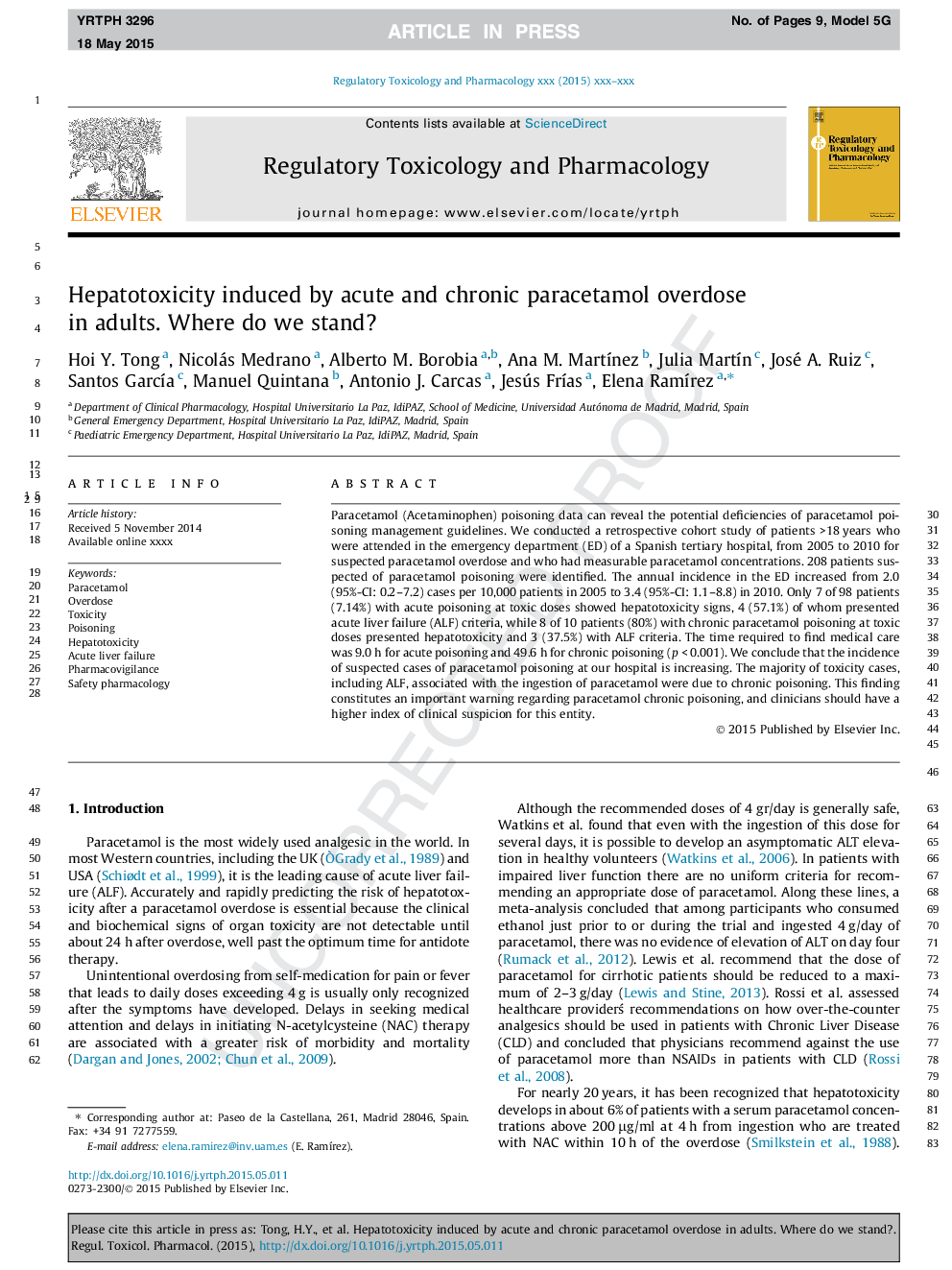| Article ID | Journal | Published Year | Pages | File Type |
|---|---|---|---|---|
| 5856735 | Regulatory Toxicology and Pharmacology | 2015 | 9 Pages |
Abstract
Paracetamol (Acetaminophen) poisoning data can reveal the potential deficiencies of paracetamol poisoning management guidelines. We conducted a retrospective cohort study of patients >18 years who were attended in the emergency department (ED) of a Spanish tertiary hospital, from 2005 to 2010 for suspected paracetamol overdose and who had measurable paracetamol concentrations. 208 patients suspected of paracetamol poisoning were identified. The annual incidence in the ED increased from 2.0 (95%-CI: 0.2-7.2) cases per 10,000 patients in 2005 to 3.4 (95%-CI: 1.1-8.8) in 2010. Only 7 of 98 patients (7.14%) with acute poisoning at toxic doses showed hepatotoxicity signs, 4 (57.1%) of whom presented acute liver failure (ALF) criteria, while 8 of 10 patients (80%) with chronic paracetamol poisoning at toxic doses presented hepatotoxicity and 3 (37.5%) with ALF criteria. The time required to find medical care was 9.0 h for acute poisoning and 49.6 h for chronic poisoning (p < 0.001). We conclude that the incidence of suspected cases of paracetamol poisoning at our hospital is increasing. The majority of toxicity cases, including ALF, associated with the ingestion of paracetamol were due to chronic poisoning. This finding constitutes an important warning regarding paracetamol chronic poisoning, and clinicians should have a higher index of clinical suspicion for this entity.
Keywords
Related Topics
Life Sciences
Environmental Science
Health, Toxicology and Mutagenesis
Authors
Hoi Y. Tong, Nicolás Medrano, Alberto M. Borobia, Ana M. MartÃnez, Julia MartÃn, José A. Ruiz, Santos GarcÃa, Manuel Quintana, Antonio J. Carcas, Jesús FrÃas, Elena RamÃrez,
